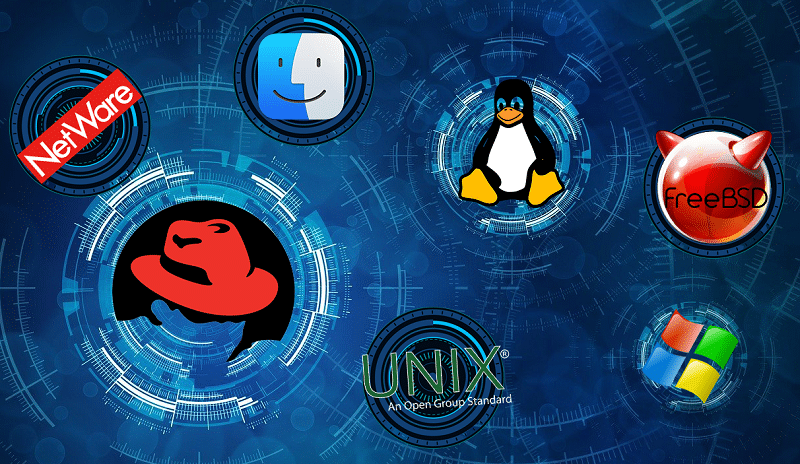Table of Contents
In today’s digitally-driven landscape, the operating system for servers is more than just software; it’s the linchpin that holds your entire IT infrastructure together. It dictates not only how your server will interact with the hardware but also how it will communicate with other software applications and services. With a myriad of options available, from open-source solutions like Linux to commercial offerings like Windows Server, making the right choice is both crucial and challenging. This article aims to simplify that decision-making process. We will provide an in-depth review of the Top Operating Systems for Servers, examining their key features, security protocols, scalability options, and cost implications. Whether you are a startup looking for cost-effective solutions or an established enterprise seeking robust, scalable options, this comprehensive guide is designed to cater to a wide range of needs and preferences.
Criteria for Evaluating Server Operating Systems: A Detailed Examination
Selecting the right operating system for servers is a multi-faceted decision that requires a nuanced understanding of various factors. Below, we expand on the key criteria that should guide your choice, providing a more comprehensive view to aid your decision-making process.
Performance and Scalability: Beyond the Basics
When evaluating performance, it’s essential to look at how the operating system handles multi-threading, load balancing, and resource allocation. These factors can significantly impact the speed and efficiency of your server operations. Scalability is not just about adding more hardware; it’s also about how easily you can integrate new features, update existing ones, and adapt to changing business needs without causing system disruptions.
Security Features: A Multi-Layered Approach
In today’s complex cybersecurity landscape, a multi-layered approach to security is vital. This means not just relying on built-in firewalls and encryption but also considering features like intrusion detection systems, secure boot processes, and two-factor authentication. Regular security audits and patches are also crucial to ensure that the system remains impervious to emerging threats.
Cost and Licensing: The Hidden Expenses
While the upfront licensing fees of commercial operating systems are often well-documented, hidden costs can add up. These may include charges for additional modules, premium support services, or even penalties for non-compliance with licensing terms. It’s crucial to read the fine print and consider the total cost of ownership over the system’s lifecycle.
Ease of Use and Management: The Admin Perspective
From an administrative standpoint, the ease of use and management of a server operating system can significantly impact operational efficiency. Features like remote management capabilities, automated updates, and intuitive dashboards can save time and reduce the likelihood of human error.
Community and Support: The Ecosystem Matters
An active community and support network can be a lifesaver when you encounter challenges or need specialized guidance. Open-source systems often excel in this area, offering extensive online forums, tutorials, and third-party tools. However, commercial options may offer more structured support, including dedicated customer service teams and guaranteed response times.
By taking a deep dive into these criteria, you’ll be better equipped to make an informed decision when selecting from the Top Operating Systems for Servers. This comprehensive understanding will enable you to choose a system that not only meets but exceeds, your business requirements.
Comparative Analysis: A Deep Dive into the Top Operating Systems for Servers
Choosing the right operating system for servers is a pivotal decision that can influence various aspects of your business. To help you make an informed choice, we offer a detailed comparative analysis of some of the leading options, examining their strengths and weaknesses across multiple dimensions.
Linux: The Open-Source Powerhouse
Linux is often the first choice for cloud computing, web hosting, and other server-based applications. Its open-source nature allows for extensive customization, making it highly scalable. While Linux is renowned for its performance capabilities, it’s equally strong on the security front, offering features like SELinux for enhanced access controls. However, the system may require a certain level of expertise for effective management, particularly for those unfamiliar with command-line interfaces.
Windows Server: The Enterprise Favorite
Windows Server is a staple in many corporate environments, largely due to its compatibility with a wide range of enterprise software. Its user interface is one of the most intuitive, making it easier to manage, even for those with limited technical skills. On the downside, Windows Server often comes with higher licensing fees, and its security, while robust, may require additional configurations and regular patching to fend off vulnerabilities.
Unix: The Old Guard
Unix systems, including variants like Solaris and AIX, have been around for decades and are known for their rock-solid stability and high-security features, such as advanced user permissions and native encryption. However, these systems can be less user-friendly and may require specialized skills for effective administration. Additionally, commercial versions can come with substantial licensing fees.
macOS Server: The Niche Player
macOS Server is a solid choice for businesses that are already invested in the Apple ecosystem. It offers seamless integration with macOS and iOS devices, making it easier to manage a unified network. However, it may not be the best option for scalability, especially for larger, more complex operations.
FreeBSD: The Flexible Option
FreeBSD is another open-source alternative that stands out for its performance and advanced networking features. It offers a high degree of flexibility and can be tailored to meet specific business needs. However, like Linux, it may require a more technical skill set for optimal configuration and management.
By delving deeper into the features, pros, and cons of these Top Operating Systems for Servers, you can better assess which system aligns most closely with your organizational needs, both for the present and future growth.
Additional Considerations: Vendor Support and Ecosystem
While the core features of an operating system for servers are undeniably important, there are additional considerations that can influence your decision. One such factor is the level of vendor support and the broader ecosystem surrounding the operating system.
Vendor Support: A Safety Net
Having reliable vendor support can be invaluable, especially for businesses without a large in-house IT team. This support can range from regular software updates and security patches to 24/7 customer service. Some vendors offer extensive documentation, tutorials, and community forums, providing multiple avenues for finding solutions to challenges.
Ecosystem: Third-Party Integrations and Tools
The ecosystem surrounding an operating system can significantly enhance its utility. This includes third-party applications, plugins, and extensions that can add functionality or improve performance. An active developer community can also be a strong indicator of the system’s long-term viability, as it often results in a steady stream of updates and new features.
Compliance and Certification
For businesses in regulated industries, compliance and certification are crucial. Some operating systems are better suited for meeting specific regulatory standards, such as GDPR for data protection or HIPAA for healthcare. Ensuring that the operating system you choose can meet these requirements can save time and resources in the long run.
By taking these additional considerations into account, you can make a more holistic decision when choosing among the Top Operating Systems for Servers. These factors can provide added layers of assurance and functionality, making your investment more secure and effective in the long run.
Conclusion: Making an Informed Choice Among the Top Operating Systems for Servers
In summary, the operating system for servers you choose can have far-reaching implications for your business. From performance and security to cost and ease of use, each option has its own set of advantages and drawbacks. The key is to align your choice with your specific business needs, technical expertise, and long-term growth plans. Whether you opt for the open-source flexibility of Linux, the user-friendly interface of Windows Server, or the robust security features of Unix, making an informed decision is crucial. This comprehensive review has aimed to provide you with the insights needed to do just that.









